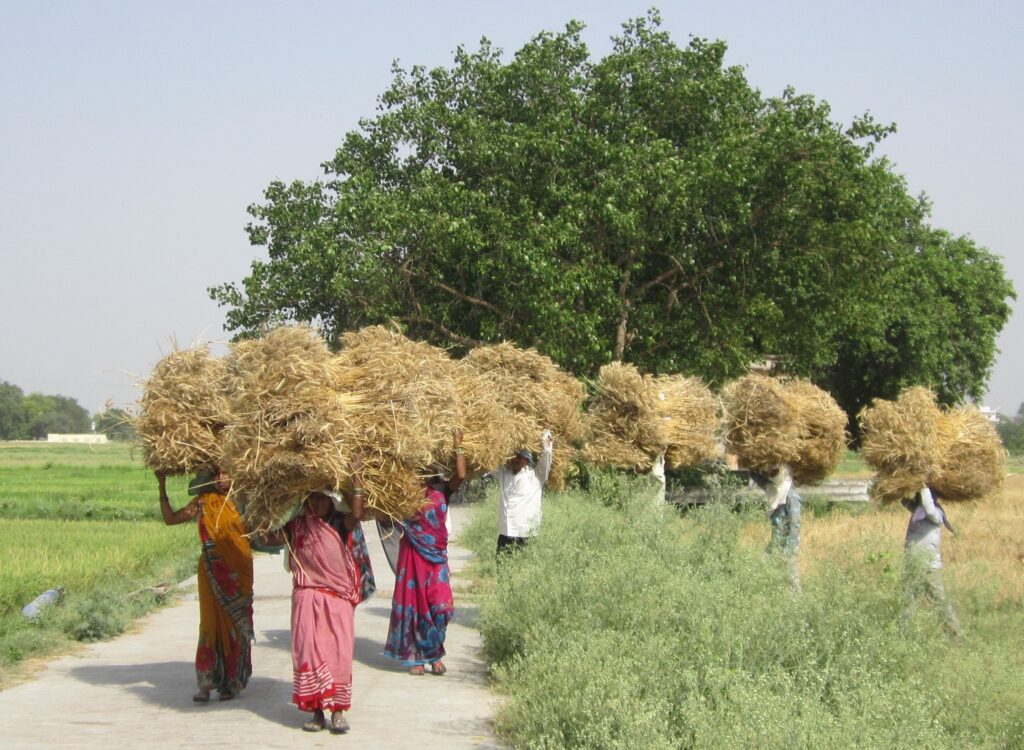When vulnerable young children in India eat foods prepared with wheat enriched with zinc, they spend significantly fewer days sick with pneumonia and vomiting, shows a study published this week. Diets in India commonly lack sufficient zinc and consequently nearly 40 percent of children under five years of age are physically stunted and markedly vulnerable to common infections, like diarrhea and pneumonia. When not corrected prior to the second year of life, stunting may become irreversible, gravely impairing individual and societal development.
The high-zinc wheat was developed through a process known as biofortification, which uses conventional crop breeding and application of zinc fertilizer to increase micronutrient levels in the wheat grain.
“This is the first large trial evaluating biofortified zinc wheat to increase zinc in diets and improve nutritional status and related health outcomes in young children and their mothers,” says lead researcher Dr. Sunil Sazawal, Director of the Center for Public Health Kinetics in New Delhi and Senior Associate of Global Disease Epidemiology and Control at Johns Hopkins University.
In the study, children who ate the high-zinc wheat—as chapatti or puri flatbread, or as porridge—experienced 17 percent fewer days with pneumonia and 39 percent fewer days vomiting, compared to children who consumed a lower zinc variety typical of conventional wheat. Mothers who ate high-zinc wheat spent 9 percent fewer days with fever.
“The prevention and reduction of nutrition-related morbidities are essential for communities to thrive,” says Dr. Erick Boy, Head of Nutrition at HarvestPlus. “Access to commercially fortified foods and zinc supplements is limited in many parts of India. A preventive solution like biofortification represents ready availability of and constant access to zinc and other micronutrients through staple crops like wheat for precisely those segments of populations.”
Published in Nutrition Journal, the study based in peri-urban New Delhi evaluated the effects of eating biofortified zinc wheat on nutrition and health among 3,000 preschool children (4–6 years old) and their mothers (15–49 years old) for six months.
In northern India, wheat consumption contributes to more than 50 percent of calories in diets. Substituting biofortified wheat varieties for conventional ones has the potential to meaningfully increase zinc intakes. For instance, for pre-school children who eat 75 grams of biofortified zinc wheat a day—or about two medium chapattis—nearly one third of their daily zinc requirement can be met.
Zinc is an essential micronutrient, required for healthy growth and development. Yet, Indian diets contain few zinc-rich foods and an abundance of whole cereal grains and small quantities of legumes; phytates found in these inhibit zinc and iron absorption. Inadequate zinc intake can weaken the immune system, making children more vulnerable to infections and respiratory illnesses like pneumonia, which are the two principal killers of children of this age around the world. For women of reproductive age, poor zinc status has been associated with negative pregnancy outcomes like preterm delivery. Globally, it is estimated that zinc deficiency accounts for 14.4 percent of diarrhea deaths, 10.4 percent of malaria deaths and 6.7 percent of pneumonia deaths among children between 6 months and five years of age.
Biofortification helps address preventable deficiencies of key vitamins and minerals like iron, vitamin A and zinc. Globally, interventions like biofortification that reduce micronutrient deficiencies are also considered the highest value-for-money investments for economic development.
